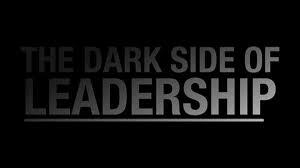Helping You Lead with Perspective

The Dark Side of Leadership Part 1 - Navigating Groupthink Behaviours
Monday 13th May 2024
Sandra Addae
Leading others and organisations is a privilege and a reward for a leader's knowledge, skills, and, most importantly, behaviours. I love the information presented when we follow innovators like Steve Jobs, Shaquille O’Neil, Lisa Nichols, and Jack Welch. I am sure you have many, many more people on your leadership list you have admired, both past and present.
However, from my own experience and the outside looking in, people who have excellent profiles and you see they're following on LinkedIn and all the accolades may be exhibiting dark behaviors that are not seen or even noticed by the grand public who align with their words yet have no real idea who they are.
I love the work and innovation of the leaders I have mentioned, but they need to have boots on the ground. In today's rapidly changing world, the need for forward-thinking leaders is more critical than ever. Gone are the days when sticking to traditional methods and practices guaranteed success. Organisations must embrace individuals who can think outside the box and adapt to new ideas and technologies to thrive in the current landscape.
I have seen and experienced the disempowerment of myself and others when you work in an organisation where group think takes precedence.
According to the Oxford Dictionary, “the practice of thinking or making decisions as a group, resulting typically in unchallenged, poor-quality decision-making: "there's always a danger of groupthink when two leaders are so alike."
Groupthink in Leadership creates dissension and destruction among staff. Unfortunately, it isolates and often eliminates the “little person” who has reached an acute point of frustration and is about to explode. We usually celebrate leadership, but leadership in the wrong people’s hands is a recipe for a depreciating workforce.
Within Groupthink settings are individuals who are poor at delivering feedback.
Feedback, in my work is the epitome of growth, and recognising that there are many reasons leaders experience low performing employees. The challenge here is whether they can be bothered to find out. They often place it in the “too hard to deal with” box. This disrupts the ebb and flow of employees, who have so much to offer and contribute. Still, a leadership ‘Group Think’ wall has been built, resulting in the employee being stonewalled and, in many cases, resigning, going on long-term sick, or having their employment terminated.
Working with Leaders, it is important to recognise that leadership is both an introspective and retrospective experience, enabling future decisions to be made for different results. If money and the bottom line are the only elements that are focused upon, as leaders, you are truly missing out on inspiring talent that will benefit a company and support the long-term vision through sustainable leadership.
How do you combat Groupthink practices? , be honest with yourself, and acknowledge your leadership mistakes. Being open with the leadership team to create a space of vulnerability is such a powerful tool leading to organisational development. The key is to be open to change.
Leaders are change makers, but the culture from a Groupthink perspective can encourage an environment that results in predatory or prisoner-like behaviors for employees to survive. In the space and age we are living in. The change to the dynamics, from a post-COVID perspective, we have to shift our thinking, output and also implement a new level of understanding for cohesiveness that will flourish and shift down into organisations that are creating leaders who are forward and free thinkers, with a sense of cultural inclusion to elevate performance and productivity.
Forward thinkers have an innate ability to anticipate future challenges and devise innovative solutions. They possess a natural curiosity that drives them to explore different perspectives and challenge the status quo. These qualities are crucial for businesses looking to stay ahead of the curve and navigate the ever-evolving market dynamics.
Furthermore, cultural inclusion is crucial to cultivating forward thinkers. It's not enough to have a team of diverse individuals from various backgrounds; true cultural inclusion ensures that everyone's voice is heard and valued. When people feel included, they are more likely to share their unique insights and ideas, leading to better decision-making and problem-solving.
Combining forward-thinking and cultural inclusion ultimately results in enhanced performance and productivity. By fostering an environment that encourages diverse perspectives and continuous learning, organisations tap into the collective intelligence of their team members. This improves the quality of work produced and boosts employee engagement and satisfaction.
In conclusion, organisations must prioritize the development of forward-thinking leaders who embrace cultural inclusion. These leaders possess the vision and creativity to navigate an ever-changing business landscape. By creating a culture that embraces diverse perspectives and encourages innovation, businesses can elevate their performance and productivity to new heights.

